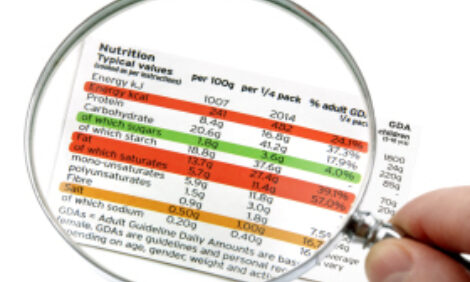



CME: Total Chicken Inventories 11.7% Higher Than a Year Ago
US - The combined inventory of beef, pork, chicken and turkey at the end of October was 2.430 billion pounds, 5.2 per cent higher than a year ago and 11.5 per cent higher than the five year average, reports Steiner Consulting Group, DLR Division, Inc.Cold storage inventories have increased at a faster pace than normal in the last three months, in part because of an increase in the supply of chicken that is ending up in storage rather than going into domestic and export channels.

Seasonally cold storage stocks peak in October and then some of that inventory is drawn down to fill holiday needs. It will be critical to see how that drawdown progresses this year in order to gauge pipeline supplies and price pressures (either up or down) in Q1.
The inventory of boneless beef at the end of October was 462.3 million pounds, 6.5 per cent less than a year ago but still as much as 12.2 per cent higher than the five year average. Boneless beef stocks increased by 1.7 per cent in October vs. September in line with the level of inventory build that we have seen in recent years.
Last year boneless beef stocks rose sharply into year-end, pressuring prices late in Q4 and in early Q1. With more beef production and larger exports it is normal for beef stocks to be higher than the five year average. The reason we see this report as neutral has to do with the fact that the inventory build so far is not very different than the five year average.
The overall inventory of pork products in cold storage at the end of October was 597.3 million pounds, 0.3 per cent lower than last year and 2.8 per cent higher than the five year average. October pork inventories declined 3.4 per cent from September levels, which compares to a 4.7 per cent average drawdown for the last five years.

The fact that cold storage numbers have for the most part followed the normal drawdown lead us to view the results of this report as neutral for prices in the short to medium term. Ham inventories normally peak at the end of September and then decline in Q4 to support seasonal demand during Thanksgiving and Christmas.
Ham inventories at the end of October were 195.5 million pounds, 2.1 per cent higher than a year ago and 5.2 per cent higher than the five year average. The stock drawdown in October was 16 per cent compared to an average 18 per cent for the last five years.
Pork belly inventories jumped 54 per cent from September levels, an earlier than normal increase in stocks and a very different trajectory than a year ago. Low belly prices in October encouraged packers and processors to put more bellies in the freezer.
Normally freezer stocks increase in November and December when slaughter peaks and demand is insufficient to clear the market. However, it appears that the combination of renewed retailer bacon features and the need to hedge Q1 needs has quickly caught up with the belly market.
Pork belly prices which were trading in the mid-90s in early October now are priced as high as $145. Boneless loin inventories rose 17 per cent in October compared to an average 4 per cent increase in the past five years. We view this as negative for loin prices in December and early January.
Total chicken inventories were 868.3 million pounds, 11.7 per cent higher than a year ago and 20.4 per cent higher than the five year average. Normally chicken inventories increase in Q4 but the increase this year has outpaced the five year average.
Turkey breast market has been well-supplied for much of this year and this has kept breast meat prices in check. Due to the weak pricing more turkey breast was put in storage than in previous year, with the breast meat inventory at the end of May up as much as 33 per cent from a year ago and 55 per cent higher than the five year average.
However, it appears that the burdensome turkey breast situation is quickly coming to an end. Inventories of turkey breast meat at the end of October were 71 million pounds, down 23.2 per cent from the previous month.
Current breast meat stocks are still up 5.9 per cent from last year and 42 per cent from the five year average. Aggressive production cutbacks and slowly improving demand should bolster turkey prices next year.










